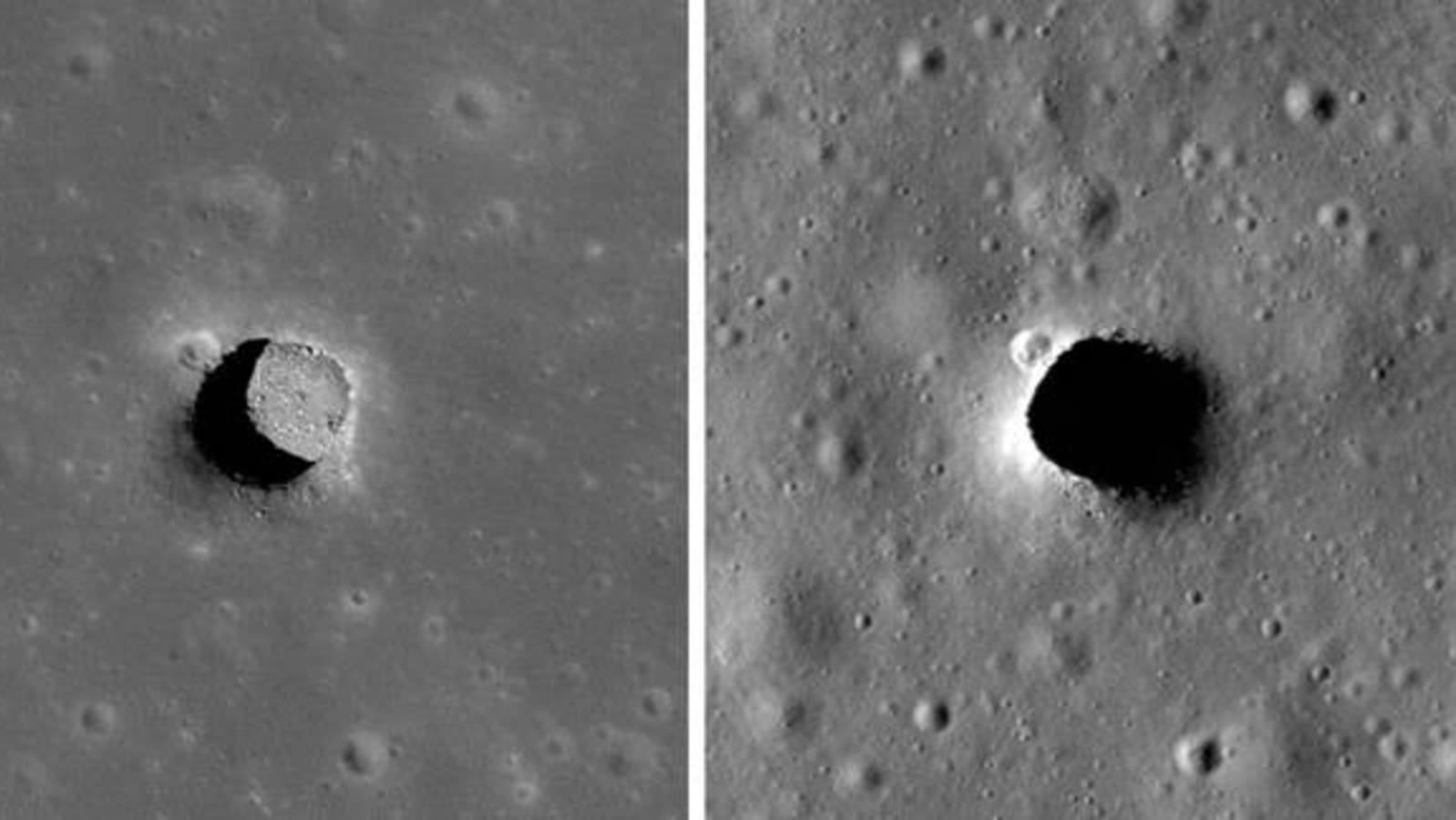Moon has caves! Scientists discover difference in temperature
The images taken by Lunar Reconnaissance Orbiter (LRO) have indicated that the Moon has caves. Here is what scientists discovered about the temperature and other details.
Moon has caves! Images of pits taken by Lunar Reconnaissance Orbiter (LRO) have indicated the same. Scientists have further discovered that parts of the pits are always about 17 degree celsius, differing from extreme temperatures at the Moon’s surface. Informing about the same NASA Moon tweeted, “Lunar Reconnaissance Orbiter images of pits indicate that the Moon has caves. Could they become astronaut habitats? Scientists have discovered that parts of the pits are always about 63°F (17°C), differing from extreme temperatures at the Moon’s surface”.
NASA Moon also informed that temperatures at the surface of the Moon vary widely, from 260°F (about 127°C) during the day to minus 280°F (about minus 173°C) at night. “The pits, and caves to which they may lead, would make thermally stable sites for lunar exploration compared to areas at the Moon’s surface, which heat up to 260 F (about 127 C) during the day and cool to minus 280 F (about minus 173 C) at night,” NASA said in a report.
It can be known that pits were first discovered on the Moon in the year 2009, and since then, scientists have wondered if they led to caves that could be explored or used as shelters. The pits or caves would also offer some protection from cosmic rays, solar radiation and micrometeorites, NASA informed.
“About 16 of the more than 200 pits are probably collapsed lava tubes,” said Tyler Horvath, a doctoral student in planetary science at the University of California, Los Angeles, who led the new research, recently published in the journal Geophysical Research Letters.
“Lunar pits are a fascinating feature on the lunar surface,” said LRO Project Scientist Noah Petro of NASA’s Goddard Space Flight Center in Greenbelt, Maryland. “Knowing that they create a stable thermal environment helps us paint a picture of these unique lunar features and the prospect of one day exploring them.”
Also Read: Mars, Uranus conjunction today? Know when, where and how to watch rare planetary phenomenon
Horvath processed data from Diviner – a thermal camera – to find out if the temperature within the pits diverged from those on the surface. “Focusing on a roughly cylindrical 328-foot (100-meter)–deep depression about the length and width of a football field in an area of the Moon known as the Mare Tranquillitatis, Horvath and his colleagues used computer modeling to analyze the thermal properties of the rock and lunar dust and to chart the pit’s temperatures over time,” NASA informed.
The results revealed that temperatures within the permanently shadowed reaches of the pit fluctuate only slightly throughout the lunar day, remaining at around 63°F or 17°C. If a cave extends from the bottom of the pit, as images taken by LRO’s Lunar Reconnaissance Orbiter Camera suggest, it too would have this relatively comfortable temperature.
A day on the Moon lasts about 15 Earth days, during which the surface is constantly bombarded by sunlight and is frequently hot enough to boil water. Brutally cold nights also last about 15 Earth days.
For all the latest Technology News Click Here

